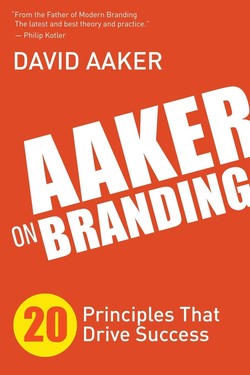Читать книгу Aaker on Branding - David Aaker - Страница 16
На сайте Литреса книга снята с продажи.
ОглавлениеChapter 5
THE ORGANIZATION AND ITS HIGHER-PURPOSE DIFFERENTIATE
Purpose-driven companies have a huge competitive advantage.Employees and customers are hungry for purpose. —Rich Karlgaard, Publisher, Forbes
Just when you have an offering innovation that powers a meaningful differentiation, a competitor brand copies you. Or, worse, appears to copy.
What a competitor brand cannot copy is an organization—its people, culture, heritage programs, assets, and capabilities—because that is unique. Thus, any point of differentiation or basis of a customer relationship that is driven by the organization rather than by offering characteristics will be enduring and resistant to competitor brands.
The organization is usually represented and driven by its values. What is important to the organization? What is at its core? What is the priority in terms of strategy, performance measurement, and programs? Is there a focus on quality, innovation, social programs, customer service, or some other fundamental tenet? And why? What is it about its heritage, programs, strategy, or value proposition that make one or more values stand out?
Organizational values can be useful for any brand. However, in the case of service offerings, where the customer will have contact with people in the organization, organizational values will be particularly important. That can also be said about BtoB firms, where the expectation that the organization will have the necessary assets and skills to deliver behind the promise and the will to stand behind the offering can be a critical consideration.
The organizational brand can represent a firm, but it also can be an organizational unit within a firm, such as Ford’s Lincoln, Disney’s ESPN, or P&G’s Tide. The challenge for these organizational units is to create and communicate their own values with supporting heritage, cultures, and programs.
HOW ORGANIZATIONAL VALUES WORK
The brand-as-an-organization perspective, summarized in Figure 3, potentially contributes to a customer relationship in three ways: to support a value proposition, to provide credibility as an endorser, and to create a higher purpose.
Supports a Value Proposition
Organizational values and associated programs can provide a “reason to believe” behind functional benefits that are the basis for a value proposition. An organization that has a reputation for delivering high-quality and innovative offerings, and has attracted people and developed programs that reflect that culture, supports a value proposition around quality and performance. A GE jet engine can be described in terms of specs and performance data. However, just the fact that it comes from GE can be a more persuasive argument that the product will deliver at a high level of performance. People believe the stated or implied assertion that Lexus delivers the highest quality because of the belief that the Lexus organization has quality as an organizational value.
An organizational reputation around a priority like quality or concern for customers is enduring. At any given time, there is always a competitor who can outspec you. Even when you are superior, there are always some segments that are uninformed or unconvinced. Having strength in an intangible dimension provides an advantage that is more durable in such a market. For example, many buy Samsung because of its reputation as an innovative technology firm, even when the product in question may not be the most advanced.
The value proposition of a new offering is often based on the claim that it contains a breakthrough advance that can too often sound like puffery. A perception of an innovative organization can help support such a claim. Kevin Keller of Dartmouth and I conducted an experiment to explore the impact of corporate image on customer acceptance of a new product outside the current range of a firm’s products.1 Four different corporate images—innovative, environmentally conscious, community minded, or neutral—were created in four settings—baked goods, personal care products, dairy products, and over-the-counter drugs. An innovative corporate image was found to be markedly more effective at making prospective new products be perceived as not only more innovative but of higher quality.
How Organizational Associations Provide Differentiation
Figure 3
Provides Credibility as Endorser
A brand representing an organization, even when it is acting as an endorser rather than an offering brand, can provide credibility. Kashi, Schwab, and Google, for example, can enhance the credibility of claims that an endorsed offering brand like GoLean, OneSource Select List, and Gmail is making. An endorser brand is especially important when a new and different offering is introduced under an unfamiliar brand name. It can make a big difference in a new product innovation program by reducing customer “risk.”
